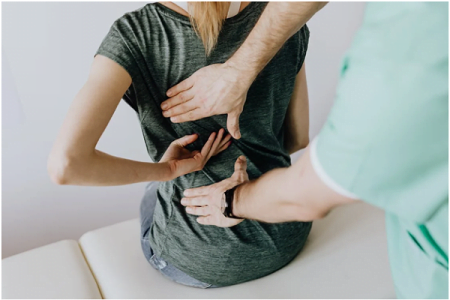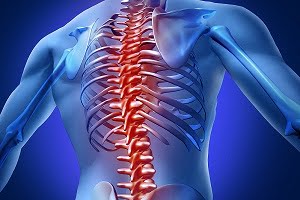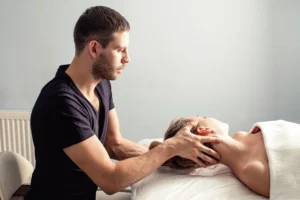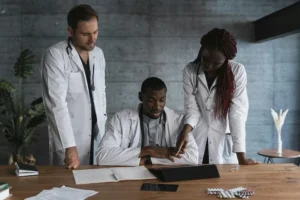What is A Bone Density Test for Osteoporosis (Bone Mineral Density, BMD Test)?
- Updated on: Jul 29, 2024
- 4 min Read
By
- Published on Oct 3, 2019
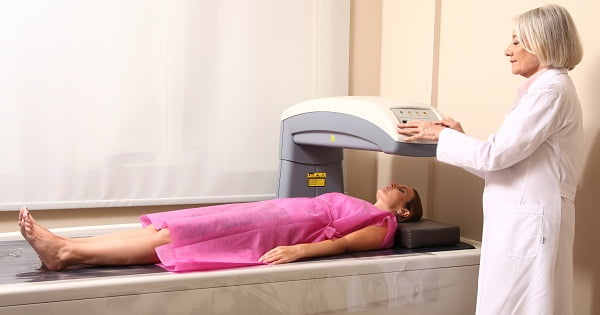
Osteoporosis Diagnosis
For diagnosing osteoporosis, the doctor reviews medical history of the patient and perform a physical exam.
Some blood and urine tests are also done to check for the conditions that may cause bone loss. If your doctor suspects the patient may have osteoporosis or that there is a risk of developing it, a bone density test may be recommended.
Bone Density Test (Bone Mineral Density Test)
Bone density test is also called bone densitometry, or dual-energy X-ray absorptiometry (DEXA). It is the only test that can diagnose osteoporosis before its consequences and symptoms begin to occur. The test uses X-rays to measure the density of the bones.
The test measures the grams of calcium and other bone minerals (bone mineral density) that are packed into a segment of bone. The main focus of this test is on wrists, hips, and spine because these three bones are at high risk of osteoporosis. This painless test can take from 10 to 30 minutes.
What a Bone Density Test Can Do (Bone Scan)
A bone density test checks whether the patient:
- has normal bone density
- has low bone density (osteopenia)
- has osteoporosis
Lower bone density implies that there is a greater risk of breaking a bone. A bone density test can help the patient and the healthcare professional to:
- know about the weak bones before a bone breakage
- predict your chances of breaking a bone in future
- determine if the bone density is improving, getting worse or is the same
- find out how well an osteoporosis medicine is working
Who Should Have a Bone Density Test
A bone density test is recommended for the following:
- A woman age 65 or older
- A man age 70 or older
- A person who breaks a bone after age 50
- A woman of menopausal age with risk factors
- A postmenopausal woman under age 65 with risk factors
- A man age 50-69 with risk factors
- A person having high bone turnover, like someone experiencing excessive collagen in urine samples
- A person having a thyroid condition, such as hyperthyroidism
- A person having a parathyroid condition, such as hyperparathyroidism.
- A person who has experienced a fracture after only mild trauma a person who has experienced a break or bone loss in the spine
- A person who has back pain with a possible bone break in the spine
- A person having height loss of ½ inch or more within one year.
- A person having total height loss of 1½ inches from original height
How to Prepare for the Test
If a person is recommended to have a bone density test, then there are certain things which should be taken care of. These are:
- A pregnant woman should inform her healthcare provider about her pregnancy
- Calcium supplements should be avoided for 24 hours before the test
- All the metal items such as jewelry and buckles should be removed from the patient’s body before the test
How does the bone density procedure work (DEXA Scan)?
The DEXA Scan (dual-energy X-ray absorptiometry) machine is used for the bone density test. This machine sends a thin, invisible beam of x-rays (in low doses) with two distinct energy peaks through the bones that are to be examined. One energy peak is absorbed mainly by soft tissue and the other is absorbed by the bone.
The bone density is calculated as:
Patient’s bone mineral density = total bone – the amount of soft tissue
The bone density measurements are displayed on a computer monitor after special software of the DEXA machine computes the result.
Types of Bone Density Tests
Central DXA
In central DXA, testing is done on the hip and spine. Bone density in the hip and spine is measured for several reasons:
- First, the likelihood of fracturing these bones is very high for people with osteoporosis.
- Second, broken bones in the hip and spine have many risk factors like longer recovery time, greater pain and even disability.
- Hip and spine bone density helps to predict the chances of future breaking of bones.
The test usually takes 10 – 15 minutes. Bone density tests are painless and noninvasive (no needles or instruments are placed through the skin or body). A central DXA uses very little radiation.
Screening Tests
Screening tests are also called peripheral tests. These tests measure bone density in the lower arm, wrist, finger or heel. Screening tests are useful when a central DXA is not available.
The machines used for screening tests are found easily in health care offices, pharmacies, shopping centers, and at health fairs.
Most central DXA machines have a limitation that they cannot measure bone density in the hip and spine of patients who are overweight. In such situations, healthcare providers recommend a central DXA test of the radius bone in the forearm together with a peripheral bone density test of the heel or another bone. Both these tests when combined provide complete information.
Where to Have a Bone Density Test?
Bone density testing is mostly offered by:
- most hospital radiology departments
- private radiology groups
- medical practices
After the test, the testing center sends the bone density test results to the healthcare provider of the patient.
How Often to Repeat a Bone Density Test?
People suffering from osteoporosis and those taking medicine should repeat their bone density test every one to two years. After starting a new medication for osteoporosis, many healthcare providers suggest repeating a bone density test after every year.
When repeating a bone density test, the testing equipment and the place of testing should be same for more accurate results.
Understanding Bone Density Test Results
Bone density test results are reported using T-scores. A T-score compares the bone density of patient with the bone density of a healthy 30 years old adult and states whether the bone density of the former is higher or lower than the latter.
A healthcare provider analyzes the T-score in the following way:
- A T-score of -1.0 or above is normal bone density.
- A T-score between -1.0 and -2.5 means you have low bone density or osteopenia (low bone mass).
- A T-score of -2.5 or below is a diagnosis of osteoporosis.
Lower the T-score, the lower the bone density of the patient.
Benefits of bone density test
The benefits of bone density testing are given below:
- It is a simple, quick and non-invasive procedure.
- No anesthesia is required.
- The amount of radiation used is extremely small—less than a day’s exposure to natural radiation.
- This testing is the most accurate method for the diagnosis of osteoporosis.
- It is also an accurate estimator of fracture risk.
- DEXA equipment is widely available making the testing easy and convenient for patients and healthcare professionals
- No radiation remains in a patient’s body after an x-ray examination.
Risks and limitations of bone density test
Some of the risks associated with the test are:
- There is always a risk of cancer from excessive exposure to radiation.
- Women who are pregnant should always inform their physician prior to the test.
- Results that are produced on a different machine cannot be compared accurately.
- A bone density test can confirm the bone density loss but lack information about the cause of osteoporosis or bone loss.






